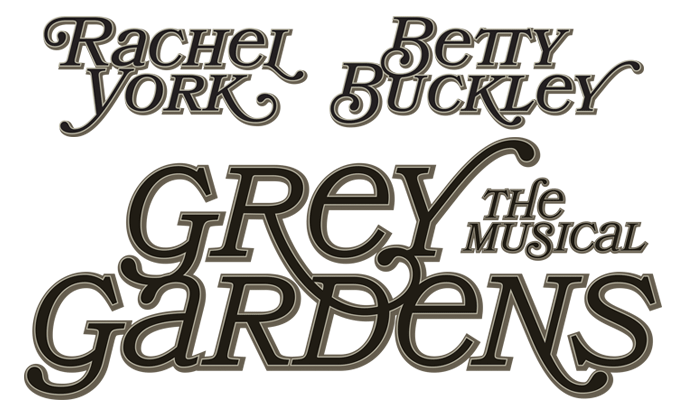‘Grey Gardens’ Melds Stage and Movie Magic

Projection designer Jason H. Thompson saw and admired director Michael Wilson’s production of Grey Gardens last summer at Sag Harbor’s Bay Street Theater. But when Wilson asked him to come onboard for Center Theatre Group’s Grey Gardens (onstage at the Ahmanson Theatre through August 14, 2016), Thompson hesitates. “I wasn’t quite sure how well projections would work with the show,” he recalled.
It took just one conversation for Wilson to change Thompson’s mind. “He had this brilliant idea of trying to fuse the documentary into the musical and relate the musical back to the documentary—the whole reason it exists,” said Thompson.
Wilson began pondering incorporating the movie into the Bay Street production a year earlier but wasn’t able to make it work in that smaller theatre. The Ahmanson offered the space for projections, and a bonus. “What better place to do that than Los Angeles, the nation’s film capital, and here at Center Theatre Group?” said Wilson.
Thompson placed three robotic cameras on the Ahmanson’s mezzanine rails to secure real-time footage of the onstage action. Ahmanson Master Electrician Jim Berger is backstage for each performance, joystick in hand, controlling the cameras as they follow the actors’ paths across the stage.
To obtain more intimate footage, the creative team decided to break away from the musical’s original Broadway incarnation by adding two new characters—Albert and David Maysles, who shot, directed, and produced the original documentary.
Portrayed in our production by Steven Good and Rogelio Douglas Jr., the Maysles brothers carry a wireless video camera—cleverly disguised as a 1970s camera and boom microphone—that transmits the live video feed to a media server that projects the video onto the exterior of Jeff Cowie’s set. The result is that “at times, you’ll feel like you’re there at the moment in which the Maysles were capturing these ladies’ lives,” said Wilson.
Audience members familiar with the original documentary may experience some déjà vu when the curtain rises for Act II, which takes place in the 1970s. The projection seems eerily similar to the documentary. Why? Because it is the documentary.
We see a shot of the dilapidated mansion’s screen door, followed by a panoramic shot of the house’s first floor. The camera then slowly climbs the crumbling stairs until Big Edie is revealed—except it’s Betty Buckley playing Big Edie, not Ms. Beale herself. Through the magic of technology, footage filmed with a green screen during rehearsals has been seamlessly inserted into the Maysles’ documentary.
Thompson’s personal favorite projection appears halfway through Act II. As Betty Buckley sings “Jerry Likes My Corn,” real-time footage of her, Rachel York, and the eponymous Jerry (played by Josh Young) are projected onto the set, drawing the audience deeper into the action onstage during a very emotional moment for everyone. “It really brings you into the bedroom with them,” said Thompson. “We were able to take a room as big as the Ahmanson and make it feel really intimate and really pull you into the actresses’ facial expressions that you can’t see from the mezzanine or the balcony.”
In addition to “documentary” footage, Thompson also designed numerous projections to set the scene and add some pizazz without big props. Act I’s “Goin’ Places” places Little Edie and Joe Kennedy on the beach in East Hampton with a little help from a projection of the northeast seaside, strategically placed on the façade of the show’s towering set.
At times, you may not even realize a projection is in use. In the Act II show-stopper “The Revolutionary Costume for Today,” Little Edie’s giant shadow is no lighting trick but actually a pre-recorded projection. Meanwhile, three rear projection screens (disguised as windows) subtly change throughout the show, helping audience members distinguish the passage of time. During Act I, which takes place over the course of a single day, the skyline shining through the window fades from baby blue to brilliant pink, finally settling into a starry night sky. For added fun, take a closer look at the wispy trees peeking through the windowpanes; they subtly move with the wind.
As is common in the creative process, some of Thompson’s ideas ended up on the cutting room floor. The show’s penultimate number, “Another Winter in a Summer Town,” was originally slated to include live video footage of Little Edie as she grapples with whether she should stay with her mother or venture beyond the walls of Grey Gardens. But during rehearsals, the creative team discovered that the added technical element drew attention from the emotional performance playing out onstage. “It’s so powerful, just her singing onstage by herself without the distraction of additional video elements,” said Thompson.
While Ahmanson audience members may accept the projections of Grey Gardens as a natural part of the show, it’s interesting to note that this a milestone achievement for Center Theatre Group. According to Ahmanson Production Manager Joe Hamlin, we’ve never used projections on such a large scale before. As a result, we invested in new technology that can be reused in future productions.
“As we move forward, more and more shows that we are doing will have projections involved with them,” said Hamlin.
